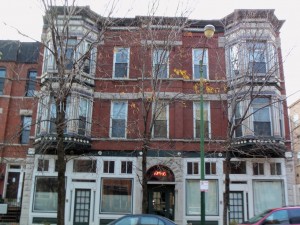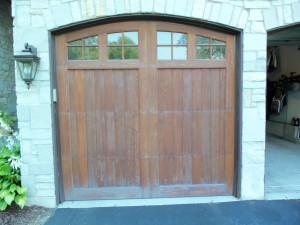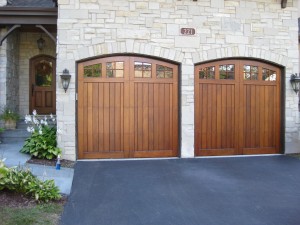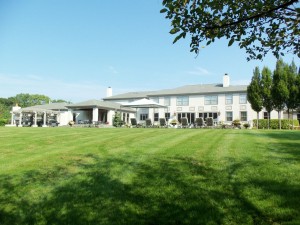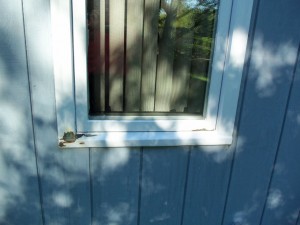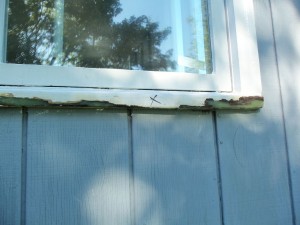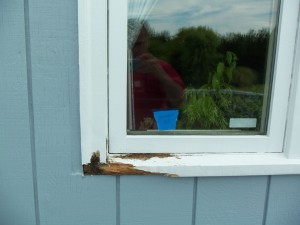In our window restoration work in the Chicago area, we are finding that flaws in the design of some modern windows contribute to premature wood decay and paint failure. As house painting contractors, we are increasingly called upon to do epoxy restorations on wood windows where the wood has rotted in the lower portion of the styles, brick moulds and the sill next to those areas.
On two different painting projects, we recently restored double-hung windows, which involved similar issues with the vinyl jamb liner. In both cases, because of its design, that portion of the jamb creates channels that trap moisture. Additionally, in the case of wood windows, these channels inhibit the proper caulking and painting of the inside portions of those channels. Since the moisture has nowhere to go, it finds its way into the miter cuts in the bottom portions of the window components and rots the wood. The picture of the wood window clearly shows the damage this problem causes. For windows like these, we recommend a by-yearly inspection and maintenance program to detect and correct the problems before they get out of hand. Periodic maintenance is essential in order to mitigate the problems associated with this window design flaw.
The other picture illustrates a similar issue with an aluminum-clad window. In this case, rotting is not the issue; premature paint failure is! On the sunniest side of the house, the moisture that gets trapped in the vinyl jamb liner heats up, deteriorates the paint film and causes it fail prematurely. On the sunny sides of a house, such windows require maintenance every 5 years or so. To correct the problem, the sills have to be sanded and repainted with 2 coats of direct-to-metal paint. Because of the discoloration caused by the sun, the whole window will likely have to be repainted. In order to ensure color uniformity, every window on that side of the house may have to be repainted as well.
Educating our customers on the pitfalls of some window designs is part of the value we create for the clients who use our window restoration services.







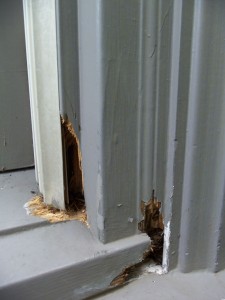
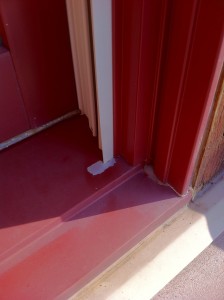
 Follow
Follow

